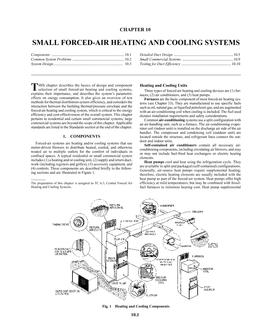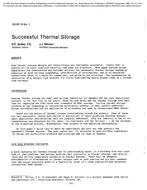Systematic studies conducted over the last few years suggest that many building materials and consumer products are important sources of indoor air pollution, and, consequently, they affect the perceived indoor air quality in buildings. Because of the diversity of the sources and types of contaminants, it has been suggested that the best technique to improve indoor air quality is to ventilate the building. However, no systematic study has shown to what extent this solution can be useful and when this solution is impractical. Currently, the required ventilation rate in nonindustrial buildings is determined per human occupant and the level of the occupant’s activity, regardless of the pollutant emissions from building materials, ventilation systems, and other sources. With the intention of saving energy, the ventilation system in many office buildings is turned off during the night. This practice may reduce the quality of indoor air during the daytime because of the accumulation of contaminants at the reduced average ventilation as well as the sorption process when the air pollutants absorbed by surfaces at night are reemitted during the day. This paper reports the results of a series of experimental studies on the impact of operation of ventilation systems and the combinations of several building materials on perceived air quality. Experiments were performed in test chambers as well as in office buildings. Untrained panels of 29-50 subjects assessed the air quality in terms of acceptability and odor intensity. Experiments were performed using test chambers to determine air quality under intermittent and continuous ventilation conditions and to establish the exposure-response relationships for each of the tested building materials. These relationships were used to quantify the impact of different operation strategies in terms of changes in ventilation rate requirement. The results of the ventilation strategy experiments indicate that intermittent ventilation reduces the daytime air quality. Thus, in order to maintain the same level of acceptability of the air as for continuous ventilation, the ventilation rates during the day must be increased. The exposure-response relationship was then used to quantify the required increase in ventilation rate in order to maintain a certain level of acceptability of the indoor air. It was also shown that the perceived air quality may improve when two materials are presented at the same time in a chamber. This is probably due to interaction between the sources involving emission from one material being adsorbed by the other. However, to achieve the same level of acceptability with the two ventilation strategies, a higher ventilation rate is required when the intermittent ventilation strategy is used. It was found that the exposure-response curve is flatter for combined materials than for a single material.
Units: SI
Citation: Symposium Papers, Atlanta, GA, 2001
Product Details
- Published:
- 2001
- Number of Pages:
- 15
- File Size:
- 1 file , 1.5 MB
- Product Code(s):
- D-7186


